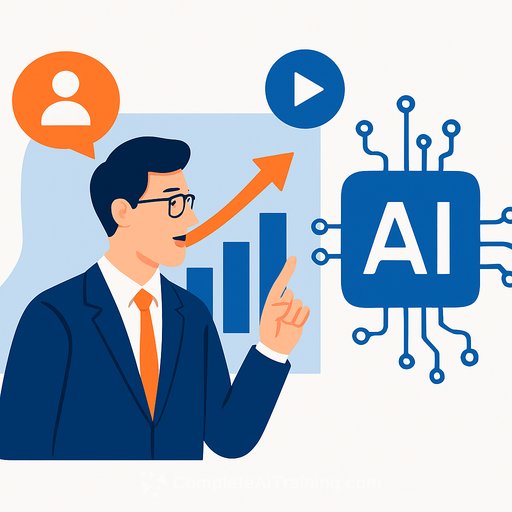The Search Challenge: Why Affiliates Need Alternative Traffic Channels
The way people find information online has changed a lot in 2024 and 2025. Organic search is no longer as reliable for affiliate marketers. AI Overviews now appear in over 35% of U.S. Google desktop searches, which means users often get answers directly from Google without clicking through to websites. Some affiliate sites have seen their traffic drop by up to 70%. For affiliates, this is a turning point that demands new strategies.
Affiliate sites focused on tech reviews and buying guides are particularly affected. Keywords with strong buying intent like “best laptops for students” often trigger AI-generated recommendations, bypassing traditional review sites altogether. Over 58% of Google searches now end with zero clicks, showing that more people find what they need without visiting external pages. Although Google claims that quality clicks still reach websites, the overall traffic volume has declined sharply.
Why Diversification Matters More Than Ever
Relying on a single traffic source is risky. The current search environment makes it clear that affiliates must diversify their strategies. Data shows that affiliates who spread their efforts across multiple channels perform better.
By analyzing audience preferences and traffic sources, affiliates can invest in the marketing channels that deliver the best returns. This approach is essential to stay competitive and avoid sudden drops in revenue.
Top Alternative Traffic Channels for Affiliates in 2025
1. Social Media Marketing: The Engagement Powerhouse
Social media remains a vital channel for affiliate marketers. Platforms like Facebook, X/Twitter, Instagram, TikTok, and Pinterest offer features that help drive organic traffic and build relationships with customers.
- TikTok: With over a billion monthly active users, TikTok is crucial for affiliates. Tools like AI voiceover help create personalized content efficiently.
- Instagram: Focus on Reels and Stories. Short-form videos on Instagram, TikTok, and YouTube Shorts generate the highest ROI.
- LinkedIn: Ideal for B2B affiliate marketing, LinkedIn generates 80% of B2B leads from social media and has conversion rates three times higher than other platforms.
Tips for success: Create authentic content that doesn’t feel overly promotional. Use user-generated content to build trust. Take advantage of platform features like shopping tags and link stickers.
2. Email Marketing: The Relationship Builder
Email marketing offers direct access to engaged audiences and remains one of the most dependable channels for affiliates.
- Segment your email lists based on user behavior and interests.
- Send newsletters that educate before they sell.
- Use automated email sequences tailored to different customer journey stages.
- Personalize emails to boost open rates and conversions.
3. Video Content: The Engagement Champion
Video grabs attention and builds brand awareness. It’s a versatile format for affiliate marketing.
- YouTube: Longer reviews, tutorials, and product comparisons.
- Short-form videos: Quick showcases on TikTok, Instagram Reels, and YouTube Shorts.
- Live streaming: Real-time demos and Q&A sessions.
- Tutorials: Step-by-step guides that naturally include affiliate products.
4. Influencer Partnerships: The Trust Multiplier
About 69% of consumers trust influencer recommendations, making partnerships with influencers valuable.
- Work with micro-influencers (1K–100K followers) in your niche.
- Focus on long-term collaborations instead of one-off promotions.
- Create content that genuinely benefits their audience.
- Measure engagement rates, not just follower numbers.
5. Native Advertising: The Seamless Approach
Native ads blend with website content and don’t disrupt the user experience.
- These ads are 53% more effective than traditional display ads on the open web.
- They build higher trust with audiences.
- They fit naturally into content consumption patterns.
6. Paid Search and Social Media Advertising
Paid ads offer precise targeting to reach potential customers despite declining organic reach.
- Focus on long-tail keywords with commercial intent.
- Use retargeting to convert visitors who didn’t buy the first time.
- Leverage lookalike audiences based on your best customers.
- Experiment with different ad formats and creatives.
7. Podcast Marketing: The Intimate Connection
Podcasts build trust through longer-form content and personal listening experiences.
- Appear as a guest on niche podcasts.
- Sponsor podcasts that match your target audience.
- Create your own podcast focused on relevant topics.
- Build ongoing relationships with podcast hosts.
Building Your Multi-Channel Strategy
Consumers interact with brands across several platforms before making a purchase. A coordinated multi-channel approach is essential.
- Consistent Messaging: Keep your brand voice steady across channels.
- Cross-Platform Promotion: Use one channel to drive traffic to another.
- Unified Tracking: Implement attribution to know which channels drive conversions.
- Content Repurposing: Adapt content for each platform but keep core messages intact.
- Audience Segmentation: Tailor your tactics based on platform behavior.
The Role of Technology and AI
AI tools help affiliates automate content creation, analyze data, personalize experiences, and predict what works best on each platform.
- Automate multi-platform content production.
- Optimize marketing spend by analyzing performance.
- Create personalized user experiences.
- Forecast which content formats will succeed on different channels.
Measuring Success Across Channels
Tracking the right metrics is critical to optimize your efforts and budget.
- Conversion rates by channel.
- Customer acquisition costs per channel.
- Lifetime value of customers from each source.
- Attribution throughout the customer journey.
- Engagement quality and rates.
Future-Proofing Your Strategy
Affiliate marketing will keep changing. Staying flexible and testing new approaches is key.
- Avoid dependence on any single traffic source.
- Experiment with emerging platforms and channels.
- Build owned audiences like email lists and communities.
- Focus on relationships, not just transactions.
- Stay updated on platform changes and opportunities.
Conclusion
Relying only on organic search is no longer viable for affiliate marketers. AI Overviews and zero-click searches mean fewer visitors come to your site from Google. The solution is clear: diversify your traffic sources.
Combine social media marketing, email campaigns, video content, influencer partnerships, and paid advertising to build a resilient, multi-channel strategy. Start testing new channels today, measure what works, and cultivate real connections with your audience. This approach sets you up not just to survive current challenges but to grow long-term.
Your membership also unlocks:






